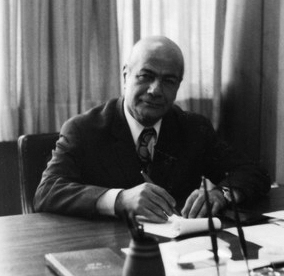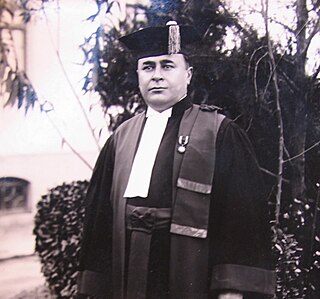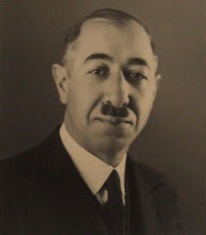
The University of Tehran is the oldest and most prominent Iranian university located in Tehran, Iran. Based on its historical, socio-cultural, and political pedigree, as well as its research and teaching profile, UT has been nicknamed "The Mother University [of Iran]". In international rankings, UT has been ranked as one of the best universities in the Middle East and is among the top universities of the world. It is also the premier knowledge producing institute among all OIC countries. Tehran University of Medical Sciences is in the 7th ranking of the Islamic World University Ranking in 2021. The university offers more than 111 bachelor's degree programs, 177 master's degree programs, and 156 PhD. programs. Many of the departments were absorbed into the University of Tehran from the Dar al-Funun established in 1851 and the Tehran School of Political Sciences established in 1899.

Iran has a network of private, public, and state-affiliated universities offering degrees in higher education. State-run universities of Iran are under the direct supervision of Iran's Ministry of Science, Research and Technology and Ministry of Health and Medical Education. According to article 3 of the Constitution of the Islamic Republic of Iran, Iran guarantees "free education and physical training for everyone at all levels, and the facilitation and expansion of higher education." IANI representatives say that academics in Iran are "ultimately directed by the regime and military when it comes to specific areas of research". Rana Dadpour, who taught at an Iranian university, said that certain areas of research are directed by the Islamic Revolutionary Guard Corps and could be employed for "surveillance or military purposes".

Dār ul-Funun was an institute of higher education in Iran, established by the royal vizier to Nasereddin Shah in 1851.

The National Library and Archives of Iran or National Library of the Islamic Republic of Iran is located in Tehran, Iran, with twelve branches across the country. The NLAI is an educational, research, scientific, and service institute authorized by the Islamic Consultative Assembly. Its president is appointed by the President of Iran. The NLAI is the largest library in the Middle East and includes more than fifteen-million items in its collections.

The Faculty of Law and Political Science at University of Tehran is one of the oldest institutions of higher education in Iran. It was initially established in College of Political Science in 1899 by the Ministry of Foreign Affairs. Most of the nation's political elite graduated from the school.

Zabihollah Safa was a scholar and professor Emeritus of Iranian Studies at the University of Tehran.

Shahed University is a public university in Tehran, Iran. The campus is located in the southern part of Tehran along the Persian Gulf Freeway. Founded in 1990, the university started its activities by accepting 165 students in seven disciplines in 1991. It now has 10,000 students enrolled in 100 programs, 8 faculties, and 7 research institutions.
André Godard was a French archaeologist, architect and historian of French and Middle Eastern Art. He served as the director of the Iranian Archeological Service for many years.

Carmania is a historical region that approximately corresponds to the current province of Kerman, Iran, and was a province of the Achaemenid, Seleucid, Parthian, and Sasanian Empire. The region bordered Persia proper in the west, Gedrosia in the south-east, Parthia in the north, and Aria to the northeast. Carmania was considered part of Ariana.

[[]]

Gholām-Hossein Sā'edi MD was a prolific Iranian writer.

Abdollah Entezam was an Iranian Diplomat, son of Seyed Mohamad also known as "Binesh Ali", leader of Safi Ali Shahi order of dervishes in Iran. His father was also a diplomat. Older brother of Nasrollah Entezam, also a career diplomat and Iranian minister of Health . His son was Hume Horan, US ambassador to Saudi Arabia.
The following is a timeline of the history of the city of Tehran, Iran.
Iranzamin School, also known as Iranzamin, Tehran International School was a combined Iranian and American international school founded in 1967 in Tehran, Iran by J. Richard Irvine and Mary Ann Irvine. In 1978, in the dawn of the Islamic Revolution, it had 1,450 students from more than fifty countries, in addition to a faculty of 112 teachers from sixteen countries.

Aliqoli Mirza Qajar was an Iranian prince of Qajar dynasty and scholar who served as the first Minister of Science in Qajar Iran. He was the forty-seventh son of Fath-Ali Shah, King of Iran. Aliqoli Mirza was fascinated by the European Enlightenment and tried to spread its ideals in Iran. During the heyday of the Dar ul-Funun college, he was the headmaster of the school and played a key role in its survival.
Rouben Abrahamian was an Armenian Iranologist, linguist and translator.

Esmail Merat was Iran's minister of education during Reza Shah reign. He is founder of some faculties of university of Tehran, including law faculty and technical faculty. He has also founded art section of University of Tehran.
Alliance school Tehran was the first Alliance Israélite Universelle school built in Iran. Located in the capital Tehran and founded in 1898, it was the first western style school in Iran, and is still open today.
Alliance School Kermanshah was a Jewish school in the western Iranian city of Kermanshah, founded by the Alliance Israélite Universelle. It provided education up to 18 years old and had two annexes; one for girls and one for boys.

Martiros Khan Davidkhanian (1843-1905) was an Iranian general, philanthropist, professor, the Chief of Staff of the Persian Cossack Brigade, Amir Touman and the Commander of the Royal Guard of the Qajar Court. He taught Russian to Naser al-Din Shah Qajar, the King of Iran.















